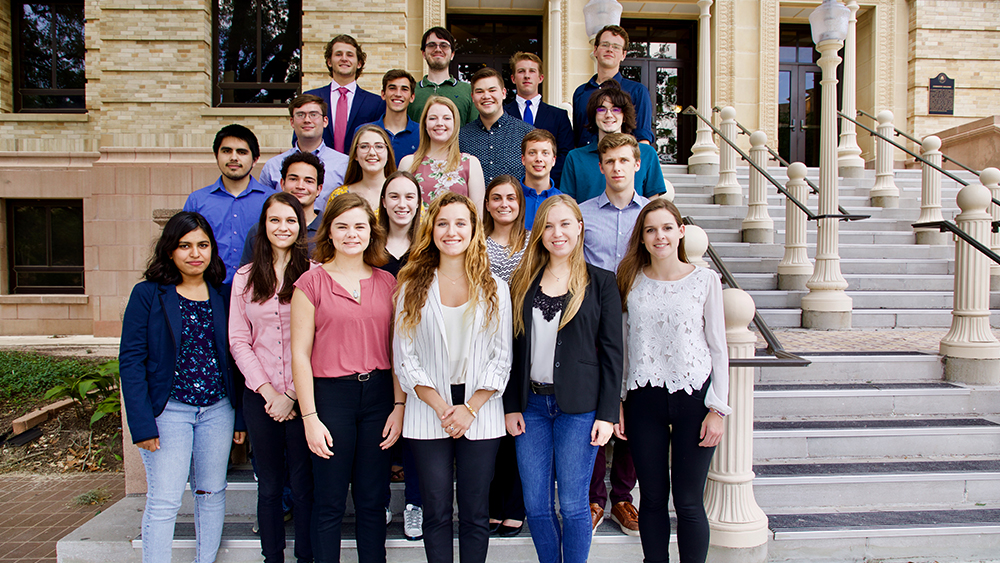
Summers at Texas A&M University are hot, but that doesn’t hinder faculty, students and staff in the Department of Materials Science and Engineering from conducting important research.
The materials science and engineering department offered two summer research programs for undergraduate students between May 28 - Aug. 2.
The Research Experience for Undergraduates (REU) Program was hosted at the department level and featured research opportunities that focused on multifunctional materials.
The REU program was sponsored by the National Science Foundation through their REU site grants program.
Participating students got hands-on experience in various materials synthesis and characterization techniques, different types of multifunctional materials, and materials modeling methods. They learned how research is conducted, developed experimentation and modeling skills, and learned how to conduct property characterization, analysis, testing and optimization of multifunctional materials and components. The students were mentored by materials science and engineering faculty, including those affiliated with the department, and a trained graduate student.
“Overall this REU experience has been great, particularly because the program coordinators have pushed us to improve our writing and presentation skills which are indispensable as researchers,” said Gabriel Vega-Bellido, an REU participant from the University of Puerto Rico, Mayaguez.
“The new knowledge I learned this summer about machine learning will help me at my home institution where I do research with robotics and artificial intelligence,” said Dana Ronin, undergraduate student at the University of Maryland.
The Undergraduate Summer Research Grant Program (USRG) was hosted at the college level and students were assigned faculty in departments, including materials science and engineering, to conduct research.
The USRG was hosted by graduate programs in the college of engineering.
The Center for Research Excellence on Dynamically Deformed Solids hosted eight USRG students and worked with materials science and engineering faculty on topics related to the processing, structure and mechanical properties of advanced multiphase metals and composites. Projects varied in focus on experiments, computer modeling or theory.
“During the USRG program, I not only learned valuable laboratory skills. but also about teamwork and communication skills,” said Gregory Wong, a materials science and engineering undergraduate student at Texas A&M. This experience has also given me great insight in the process of continuing my education in a post-graduate program."
Both programs are not major specific and students can find and apply for research opportunities based on their interest, regardless of major.
“This program provides opportunities for the brightest kids in their classes to learn how to conduct scientific research and help them decide if they want to continue their careers in pushing the boundaries of science,” said Dr. Ibrahim Karaman, Chevron Professor I and head of the department. “The fact that many of the students are from other states demonstrates the success of these programs that we have been running for the last four years.”
Both programs had 22 participants, and students from numerous institutions took part, including the following universities: Virginia Tech University; University of Tennessee at Knoxville; University of Utah; North Carolina State University; University of Alabama at Huntsville; University of Idaho; University of North Texas; University of Maryland; University of Puerto Rico at Mayaguez; University of Mississippi; Rio Hondo College; University of Arkansas at Fayetteville; and University of Connecticut.
At the end of the program, students presented their research results in a poster symposium consisting of three sessions. Participants were evaluated by both mentors and peers alike. A materials science and engineering summer program student placed within each session.
Rowan Baird, University of Mississippi, placed first in session A, Gregory Wong, materials science and engineering undergraduate at Texas A&M, placed second in session B and Andrew Falkowski, University of Utah, placed first in session C.